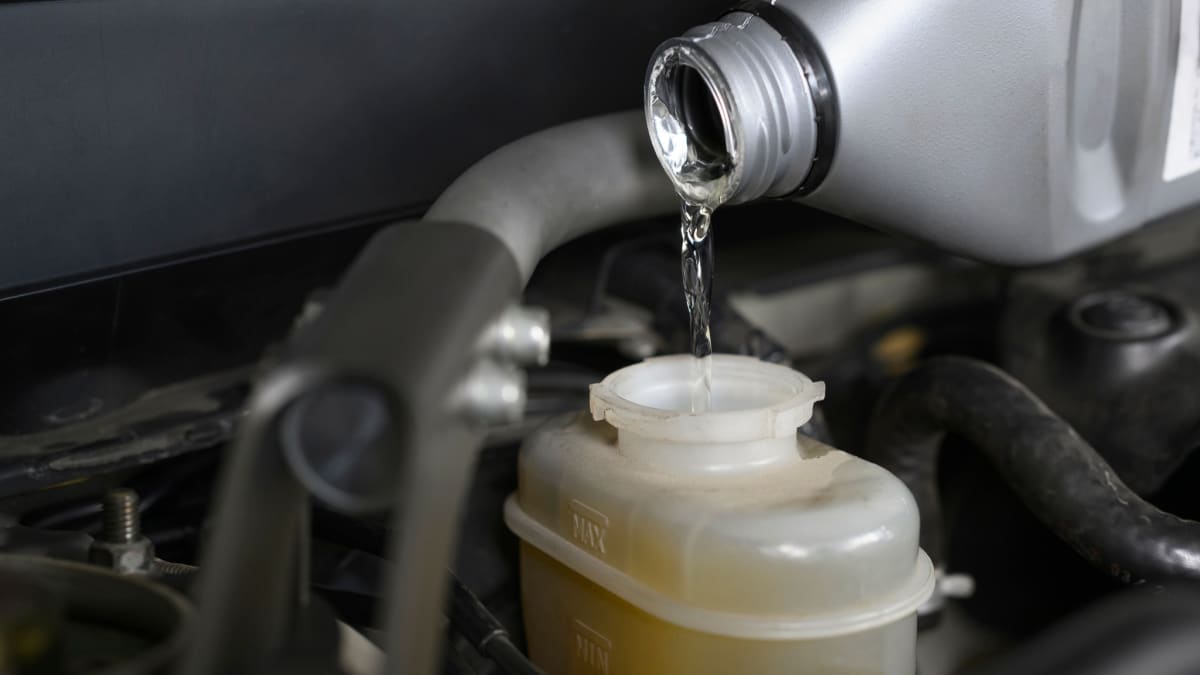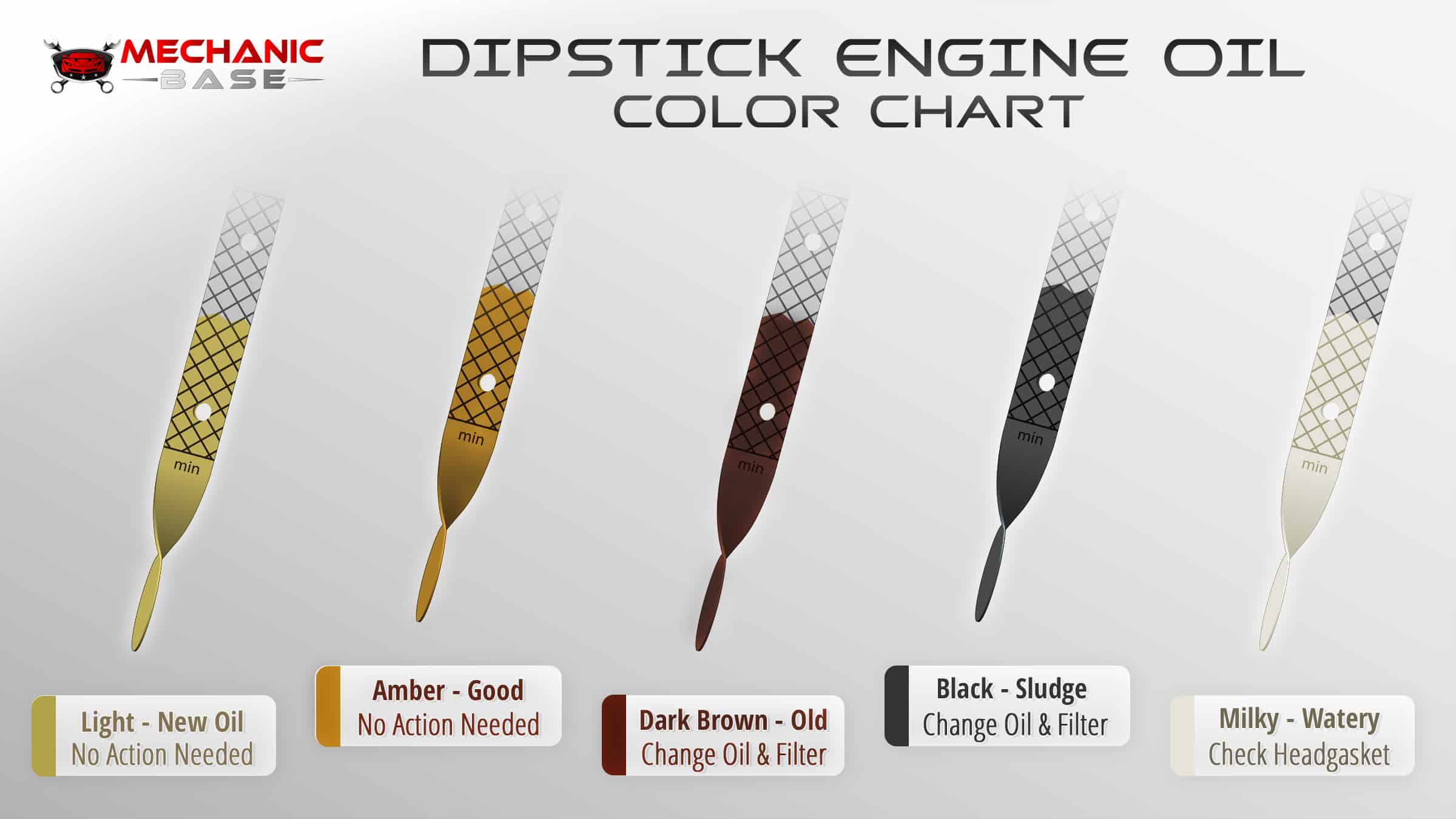Your car uses several different types of fluids to ensure every system receives the lubrication it requires. The power steering is no different. It also contains fluid, making it difficult to determine what’s leaking if something is dripping under the car. What are the possible power steering fluid colors, and what do each of them mean?
In this guide, I examine the different colors of power steering fluid or leaks you might see. I also discuss in-depth the basics of power steering fluid, including what types are available.
Power Steering Fluid Colors
Most of the time, the power steering fluid is going to be red, green, or pink, depending on the car model. There are times when it could also be clear, but that’s rare. If you notice any other color, it may mean that the power steering fluid is contaminated, or there’s another problem to be addressed.
Here is a more detailed list of the power steering fluid colors:
1. Red/Pink
This is the color that your power steering fluid should be in most car models. Today’s power steering fluids are dyed red, with some leaning toward having a pink hue.
If you look under the car and see red liquid dripping from the vehicle, it could be the power steering fluid, but it could also be automatic transmission fluid, because both systems use the same type of fluid. However, you will still want to look at the leak’s location. If it is coming from the front of the vehicle, near the engine, it’s probably power steering fluid.
2. Green
Older power steering fluid was always red or pink. However, in modern cars you can often find green power steering fluid. Green power steering fluid is mostly found in European car brands like Volkswagen or Audi.
This green power steering fluid is, in most cases, not similar to the red power steering fluid, and the two should not be mixed with each other. The green fluid is often better suited for colder climates due to the lower viscosity. Only use power steering fluid with the right specifications for your car to prevent damages.
3. Clear
Before the power steering fluid is dyed red or pink, it starts out as clear. Before the manufacturing process is over, the fluid is actually just clear. There are a few manufacturers that prefer to keep it clear because the dyes can change how the fluid runs.
Yet, it’s very difficult to tell what’s leaking if the fluid is clear. It can easily be confused with the water that’s coming from the air conditioning system, although the power steering fluid has a slippery texture.
4. Brown/Black
Power steering fluid is not made to be black or brown. The only fluid that is naturally brown or amber is the engine oil. As the oil becomes contaminated, it turns black. The same can be said about power steering fluid if left unchecked.
While you might pour fresh red fluid into the car when you replace it, the fluid will eventually build up with debris and dirt. As this happens, the fluid turns brown or black.
If your power steering fluid is contaminated enough to change color, you need to have it changed. The fluid should be flushed out and replaced with some that’s new. The dirty fluid isn’t going to work the same way as fresh fluid, and it could lead to the failure of the necessary components.
RELATED: Can You Use Brake Fluid As Power Steering Fluid?
5. Yellow
If you notice a yellow hue to the power steering fluid, it doesn’t mean that it’s been contaminated with dirt. However, it shouldn’t ever be yellow, either.
Most likely, coolant got mixed in with the power steering fluid somehow. It doesn’t matter how it happened or what went wrong – all you need to know is that it should be flushed and replaced to ensure the safety of the system.
Be aware that some power steering fluid manufacturers make yellow power steering fluid, so there may not be anything wrong with the fluid, but it does need to be inspected further, just to be sure.
6. Milky/Foamy
Of all the colors that your power steering fluid can be, this one definitely means trouble. You don’t want to see anything milky or foamy when you check your power steering fluid. This condition shows that air or moisture has gotten trapped in the liquid. Instead of it having its natural slippery feel, it’s going to be slimy.
You should take quick action if this is what you see. Air has gotten trapped in the closed system and you want to fix it as soon as possible. If left unchecked, you could start to hear sounds coming from the steering, and it might not handle properly. The only way to resolve it is to drain the fluid and fill the system with fresh fluid.
RELATED: 6 Signs of a Bad Power Steering Pump (& Replacement Cost)
Types of Power Steering Fluid
Universal
Universal power steering fluid is compatible with many different systems. Just because it’s called universal, though, doesn’t mean you should use it in your car. First, you need to check the compatibility based on manufacturer recommendations.
Universal power steering fluid may not have the same additives or benefits as others. However, it will still reduce the friction of the internal parts, thereby protecting everything that’s critical.
Mineral
Mineral power steering fluid is made from refined petroleum and special additives. This combination is meant to improve the performance of the oil. By using this type of fluid, you adequately protect the rubber components that require lubrication.
Of all of the types, this is one of the cheapest to choose. However, it also needs to be changed more frequently, and tends to foam easily.
Semi-Synthetic
With the semi-synthetic power steering fluid, you gain many benefits of the mineral formulation with some additional properties. With the lower viscosity degree and ability to lubricate, there’s less of a chance of foaming.
However, they can also cause destruction to some of the rubber because of special additives. This is something to watch out for if you are using a fluid that mixes synthetic and petroleum properties.
Synthetic
Synthetic fluid is the option that most manufacturers are recommending for modern vehicles. These still have some refined petroleum aspects but also contain unique additives to elevate them. This type of power steering fluid is able to have less impact on the rubber parts than some other formulations, and it isn’t known to foam as easily. It also flows smoothly in a variety of situations.
With the synthetic power steering fluid, you won’t need to flush the system as often. It’s meant to last as long as possible, which is why most luxury automakers recommend using this type of fluid. When you choose a fluid, make sure it always meets ISO 7308 and DN51 524T3 standards.
RELATED: 3 Different Power Steering Fluid Types (& How to Change)
How to Replace Power Steering Fluid
Are you able to replace the power steering fluid on your own? If you have some mechanical expertise and the right equipment, it’s not difficult to flush the fluid and replace it with new fluid. However, you should always read the service manual before you get started and make sure you have the right formulation for your car.
You should put any steps you find in the service manual ahead of what we outline. For reference purposes, here are some general guidelines you might be able to follow.
- Gather your supplies first. Get the right fluid and make sure you have the tools to get the job done. You don’t want to stop in the middle of the job to go get more equipment.
- Find the power steering reservoir. It’s under the hood, usually on the driver’s side of the vehicle.
- Jack up the front end of the car so you can get underneath. Place the vehicle securely on jack stands.
- Remove the hose from the reservoir. Put a container under the system to drain the fluid. Allow all of it to run out.
- Turn the steering wheel from side to side until the fluid stops running out.
- Close the system so the new fluid won’t drain out.
- With a funnel, fill up the reservoir with fresh fluid.
- Lower the vehicle to the ground and double-check the fill level. You may need to top it back off slightly after you start the engine.
- Turn the steering wheel again fully to the right and left, and keep an eye on the power steering fluid level. Refill when necessary.
- Test drive the vehicle, paying close attention to how the steering feels.
If you run into any trouble during the process, reach out to a local mechanic for more support.
Does power steering fluid color matter?
Yes, the color of the power steering fluid matters. For example, if your car uses red power steering fluid, it will not be compatible with green power steering fluid. But different manufacturers have different colors for the same fluid, so it is much better to look at the specifications and use one that is compatible with your car.
What color is dirty power steering fluid?
Dirty or bad power steering fluid is darker than the original color. Many power steering fluids are originally red or green, so if the color of your power steering fluid is dark red, brown, dark green, or black, it’s definitely time to replace the power steering fluid.
Is power steering or transmission fluid red?
Both the power steering fluid and transmission fluid may be red. You will also find that in many car models, the power steering fluid and transmission fluid are actually the same fluid and can be mixed together. However, it is important to check the specifications of your car model.
Can you mix green and red power steering fluid?
No. Red and green power steering fluid should not be mixed. Green power steering fluid usually has a lower viscosity and is better suited for colder climates. They are also often two completely different types of liquids. Only use power steering fluid that has the right specifications for your car.
RELATED: Hydraulic vs Electric Power Steering – Differences, Pros & Cons
Categories: General












